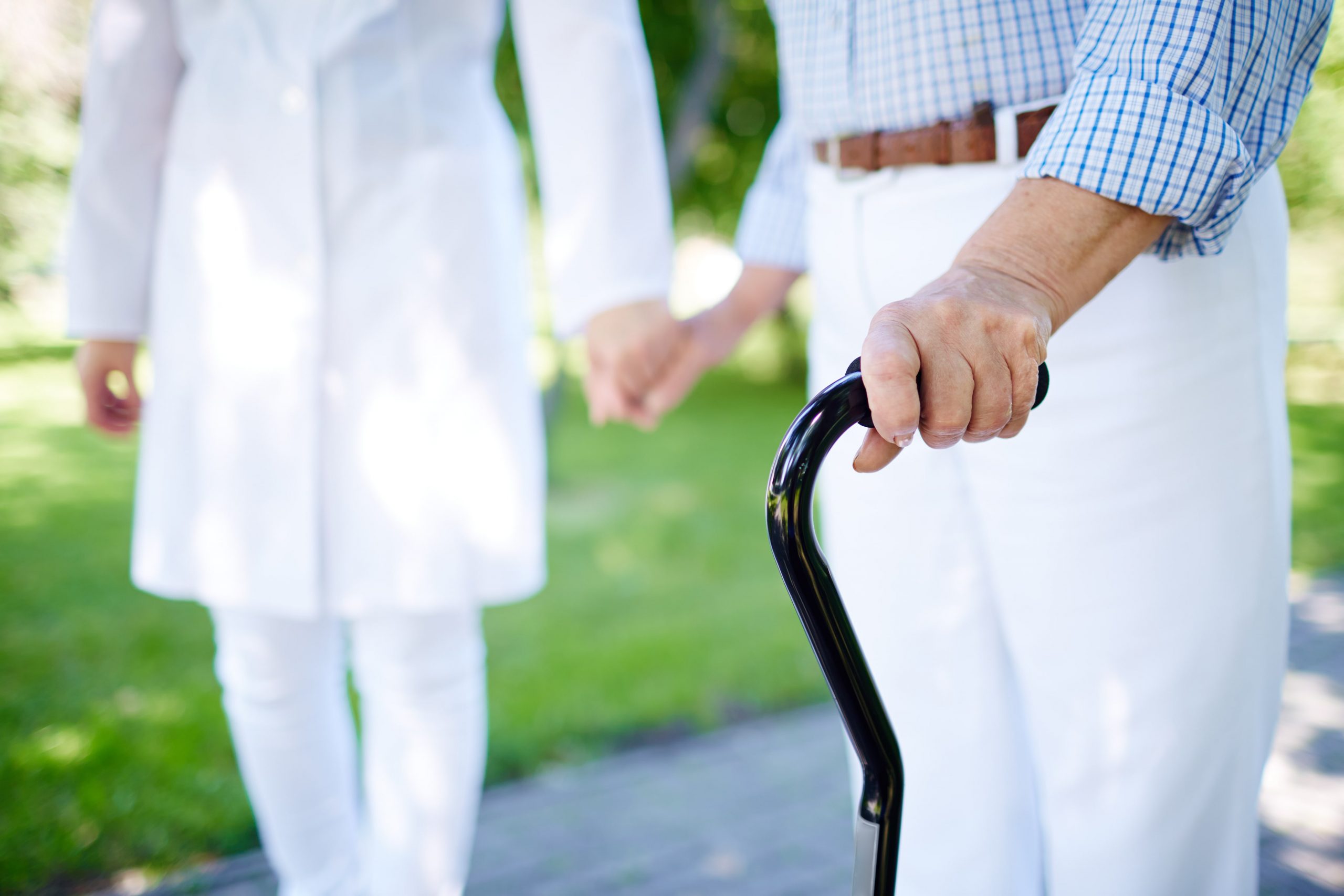When strokes occur, the initial response is to concentrate on helping your loved one come out of the situation healthy. However, after all of the health scares are over, most stroke survivors are left with significant deficits that can cause problems in independence. These problems can arise over many activities, and they are usually addressed in the lengthy rehabilitation process. During that process, many forms of adaptive equipment are introduced to help the stroke survivor achieve as much independence as possible.
The activities of daily living, or ADLs, refer to the routine steps we take to care for ourselves. Most stroke deficits affect the ADLs, and the equipment is designed to address these issues. These activities include dressing, grooming, bathing, walking, and eating. Fortunately, technology has been developed to allow even the most affected stroke survivor to perform some or all of these tasks independently. Even if your loved one is not able to perform them independently, they may be able to perform them with supervision or minimal help. It is helpful to consider some of the equipment you may need to use with your loved one. The best health care provider to ask about adaptive equipment is your occupational therapist.[/vc_column_text][/vc_column][/vc_row]
Ambulatory Aides
Stroke survivors can use many different types of adaptive equipment for ambulating. The most common is the simple cane. Although single point canes are usually what come to mind, most stroke survivors need a cane with four contact points for stability. This is called a quad cane. Walkers are another ambulatory aide that can be used. The determination between a cane and a walker can be tricky. It will depend on how much strength is left in the non-paralyzed leg and how stable a stroke survivor is on their feet. Walkers are for those who need a bit more help, but there are many types of walkers now that can actually enhance lifestyle by substituting as a chair.
For most patients who have survived a stroke, they will have one leg that is paralyzed. This means that they cannot control the knee or ankle, but they are often able to control the hip. Since the ankle is essentially “floppy,” the foot can get caught on each step and trip the survivor. Doctors refer to this phenomenon as foot drop. A prosthetic brace is often used called a foot-ankle-knee prosthetic. The equipment keeps the leg rigid and often allows for a stable base of support, despite the lack of movement in the leg. If the survivor can ambulate with this device, they may only need a cane.
Dressing Equipment
Many adaptive devices are available to help stroke survivor dress independently. With only one arm, it may seem impossible for them to dress themselves, but many do. For instance, putting on a pull over shirt starts with putting the paralyzed arm into the sleeve first, pulling the shirt over the head, and then putting the functioning hand through the remaining arm. With highly functioning stroke survivors, this is a skill they can perform with practice. For shirts that are button up, there is a special loop that can help pull buttons through. You put on the shirt much like the pull over, then pull the two sides together. The button tool is a metal loop on the end of a stick. Push the metal end through the button hole, then loop it around the corresponding button. Simply pull it through. Again, this takes a good deal of practice.
For lower body dressing, the strategy for pants can be worked out, too. You should put your brace on beforehand, and this is usually possible with the non-effective hand. Put on your pants by pulling the leg over the paralyzed leg first. Then pull the non-effected leg into the other opening. You can even get equipment that helps you put on socks independently. It is a cupped piece of almost cylindrical plastic with a rope loop on the end. You put the sock over the end of the plastic, put your foot in the sock, and then pull the rope until the sock drifts over your heel. Many stroke survivors can also tie their shoes one handed, and it isn’t as hard as it looks.
Bathroom Modifications
The bathroom can be a dangerous place for stroke survivors, and this is where adaptive equipment is the most important to use. Grab rails are absolutely necessary in both the toilet area and the bathtub. They should be professionally installed on the studs to ensure that they are secure for the full weight of the stroke survivor. Usually, a contractor can help install these bars for a fee. Another type of equipment is a raised toilet seat. It is a round piece of plastic that is about four inches in height. It has a hole in the center for the use of the toilet. The seat rests on the toilet with no further installation, and it can be removed easily.
For bathing, it may be hard to safely and independently perform this act as a stroke survivor. One piece of equipment that is needed is a shower chair. There are many different configurations of shower chairs, some that even come over the side of the tub to allow transferring from a wheelchair to the shower chair. It is important not to lean over too far while taking a shower. The survivor can easily pitch forward and suffer a head injury. A simple sponge on the end of a stick can allow them to wash the parts of them they cannot reach with their hands. Again, stroke survivors should be monitored while bathing to ensure safety. Even if they are shy, the bathroom is a place of dangers that supersede any personal fears. Although they may not appreciate it, supervision is absolutely necessary for bathing, but most of the washing itself can be done with adaptive equipment.





